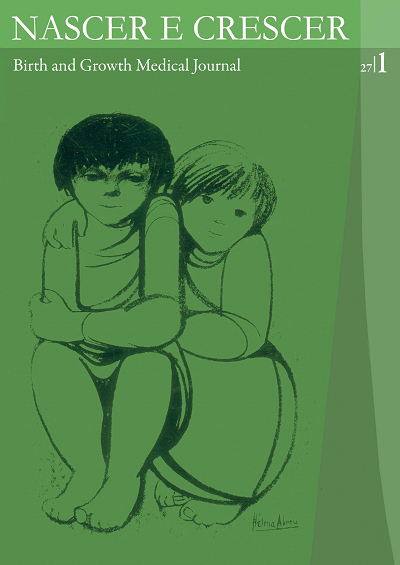Cutaneous Larga Migrans - presentation of two typical cases
DOI:
https://doi.org/10.25753/BirthGrowthMJ.v27.i1.9487Keywords:
Child, cutaneous Larva Migrans, emigrantAbstract
Introduction: Cutaneous Larva Migrans is a dermatosis caused by nemantode parasites, mainely Ancylostoma brasiliensis and Ancylostoma caninus. It is an endemic disease in tropical countries but a rare diagnosis in the rest of the world.
Case Report: We report the case of a ten-year-old child emigrated from Angola. The physical examination showed scarring injuries from previous incisions made as a form of treatment as well as a serpiginous lesion on the dorsum of the left foot, compatible with cutaneous Larva Migrans. The patient was started on albendazole and complete resolution of symptoms was obtained after one week. About that time, the patient’s brother, who had the same symptoms on both feet, was submitted to the same treatment, also with resolution of symptoms.
Discussion: The authors wish to enphasize the relevance of this case due to the migration from countries with high prevalence of cutaneous Larva Migrans.
Downloads
References
Macias VC, Carvalho R, Chaveiro A, Cardoso J. Larva Migrans cutânea – a propósito de um caso clínico´. Revista SPDV 2013; 71.
Ferreira C, Machado S, Selores M. Larva Migrans cutânea em idade pediátrica. Nascer e Crescer 2003; 12: 261-4.
Heukelbach J, Feldmeier. Epidemiological and clinical characteristics of hookworm-related cutaneous larva migrans. Lancet Infect Dis. 2008; 8:302-9.
Hagmann S, Neugebauer R, Schwartz E, Perret C, Castelli F, Barnett ED, Stauffer WM, GeoSentinel Surveillance Network. Illness in Children After International Travel: Analysis From the GeoSentinel Surveillance Network. Pediatrics 2010; 125:e1072-80.
Weller PF, Leder K. Hookworm-related cutaneous Larva Migrans. Up-to-date: 2015.
Alves C, Proença V. Larva Migrans cutânea – um caso de apresentação típica no viajante. Revista Portuguesa Medicina Geral e Familiar. 2012; 28:136-8.
Kliegman RM, Behrman RE, Jenson HB, Stanton BF. Nelson. Tratado de Pediatría. 18th. Barcelona: Elsevier, 2008.
Kerri SP, Richard GL, Amanda NW, Noreen W, David H. Cutaneous Larva Migrans. The Lancet Infectious diseases 2011; 377:1948.
Moreira, H. Emigração Portuguesa - Estatísticas retrospectivas e reflexões temáticas. Revista de Estudos Demográficos 38: 47-65.
Downloads
Published
How to Cite
Issue
Section
License
Copyright and Authors' Rights
All articles published in Nascer e Crescer - Birth and Growth Medical Journal are Open Access and comply with the requirements of funding agencies or academic institutions. For use by third parties, Nascer e Crescer - Birth and Growth Medical Journal adheres to the terms of the Creative Commons License "Attribution - Non-Commercial Use (CC-BY-NC)".
It is the author's responsibility to obtain permission to reproduce figures, tables, etc. from other publications.
Authors must submit a Conflict of Interest statement and an Authorship Form with the submission of the article. An e-mail will be sent to the corresponding author confirming receipt of the manuscript.
Authors are permitted to make their articles available in repositories at their home institutions, provided that they always indicate where the articles were published and adhere to the terms of the Creative Commons license.


